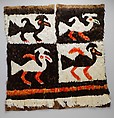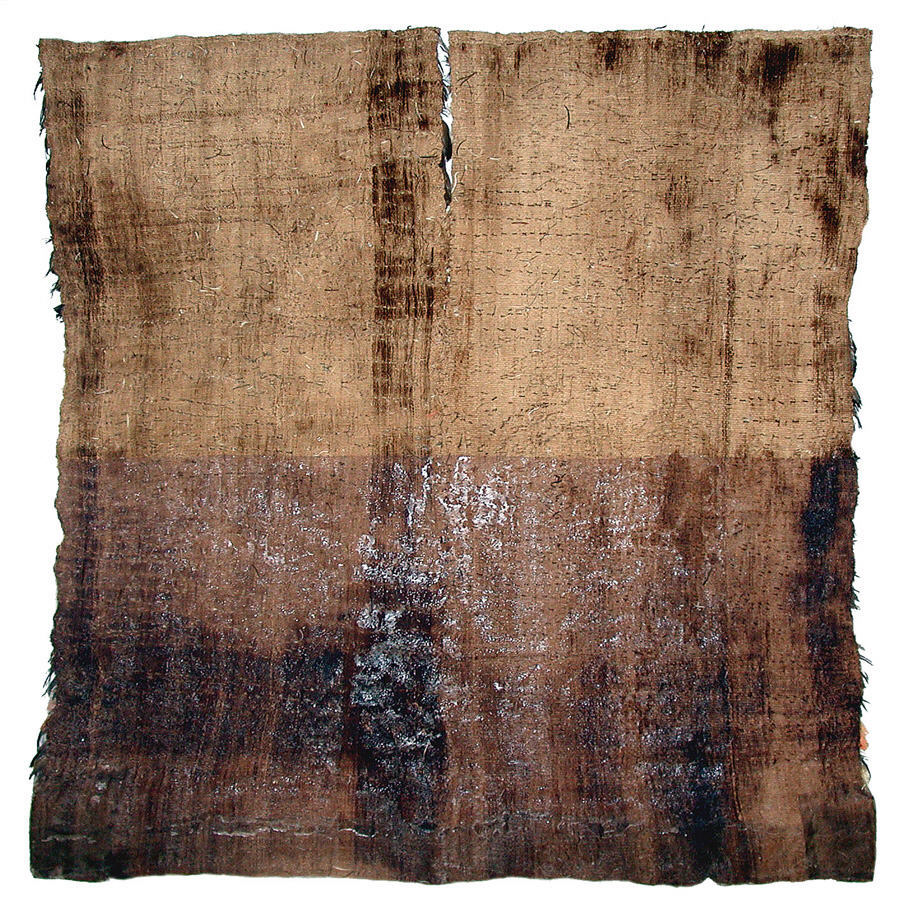Feathered Tunic
Not on view
The Chimú urban capital of Chan Chan housed thousands of specialized artisans living in densely populated areas close to the monumental architectural complexes. These artisans—potters, metallurgists, bead makers, woodworkers, and weavers—were closely supervised by members of the ruling elite, who provided raw materials and controlled the symbolic content of artistic production. The Chimú elite had to maintain contacts with populations from the Amazonian Basin in order to be supplied with foreign materials such as brilliantly colored feathers. Feather workers used a few coastal birds such as cormorants, egrets, ducks, and flamencos for their white, black, and pink feathers. However, the most popular feathers came from the rainforest. Macaws, parrots, parakeets, curassows, and tanagers provided the most vivid colors: yellow, green, blue, purple, and turquoise. This tunic includes feathers from Muscovy Ducks, Razor-billed Corassows, and Amazona parrots and macaws, and depicts sea birds in squares of alternating colors. In Chimú religion, sea birds such as pelicans were closely associated with the idea of human and agricultural fertility.
Due to rights restrictions, this image cannot be enlarged, viewed at full screen, or downloaded.
This artwork is meant to be viewed from right to left. Scroll left to view more.




